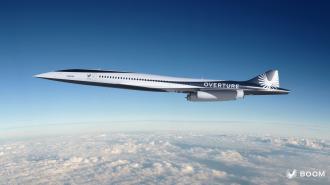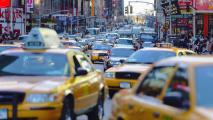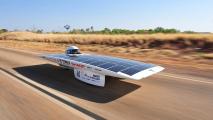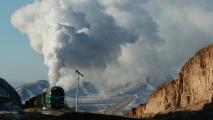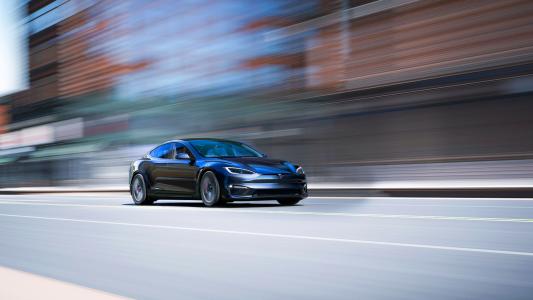This article is an installment of Future Explored, a weekly guide to world-changing technology. You can get stories like this one straight to your inbox every Saturday morning by subscribing above.
It’s 2029. You just buckled up for a transpacific flight that for the last century has taken a grueling 14 hours — or more — but you’ll be arriving in just 8.5, all thanks to a startup that decided the time was ripe to resurrect supersonic passenger flight.
Faster flight
Flying is the fastest form of transportation we have. Instead of spending two days driving across the US, you can hop a flight in New York City and be in LA just six hours later. Need to go across the pond? That’d take you a week by ship, but a flight from NYC will get you to the UK in seven hours.
It’s amazing, but it isn’t any faster than it was decades ago. Soon, though, flying could not only be even faster, but also less of a burden on the environment. To find out how, let’s look back at the history of commercial aviation, where we are today, and the startup looking to revolutionize the future of flight — by taking a page from its past.
Where we’ve been
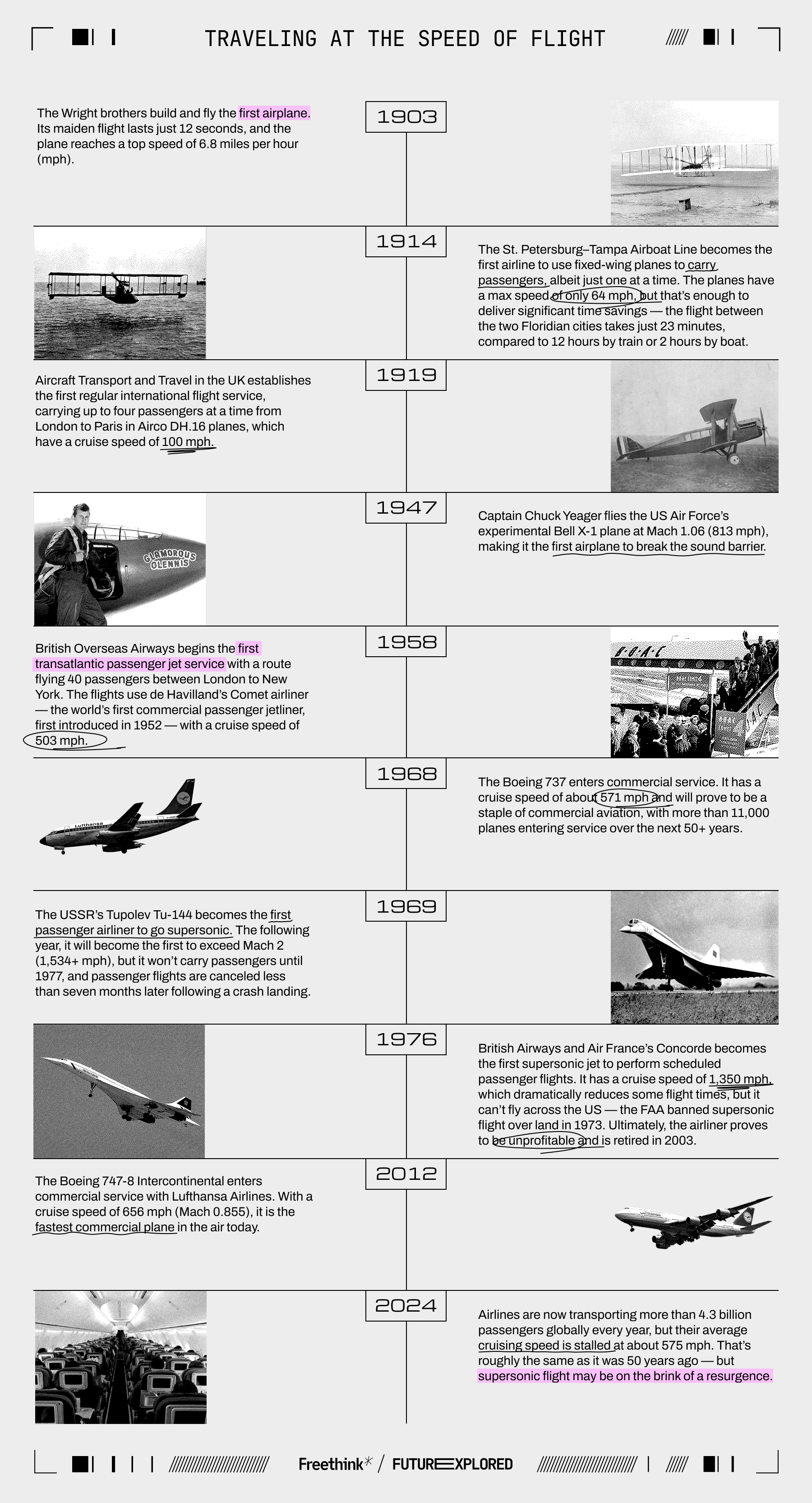
Where we’re going (maybe)
Over the past couple of decades, several startups have emerged with the goal of being the one to revitalize supersonic passenger flight — or even take travel to the next level with hypersonic aircraft.
While some have already bowed out of the race, Boom Supersonic has emerged as the frontrunner.
Founded by aviation enthusiast Blake Scholl in 2014, the startup has since built a demonstrator plane and a superfactory, racked up preorders from major airlines, and says it is now just five years away from delivering a passenger supersonic plane, Overture, to those customers.
Overture will have a cruise speed of about 1,300 miles per hour (Mach 1.7), which means it’ll be slightly slower than Concorde, the last commercial supersonic airliner. However, that plane turned out to be economically and environmentally unsustainable, and Boom is designing Overture to last.
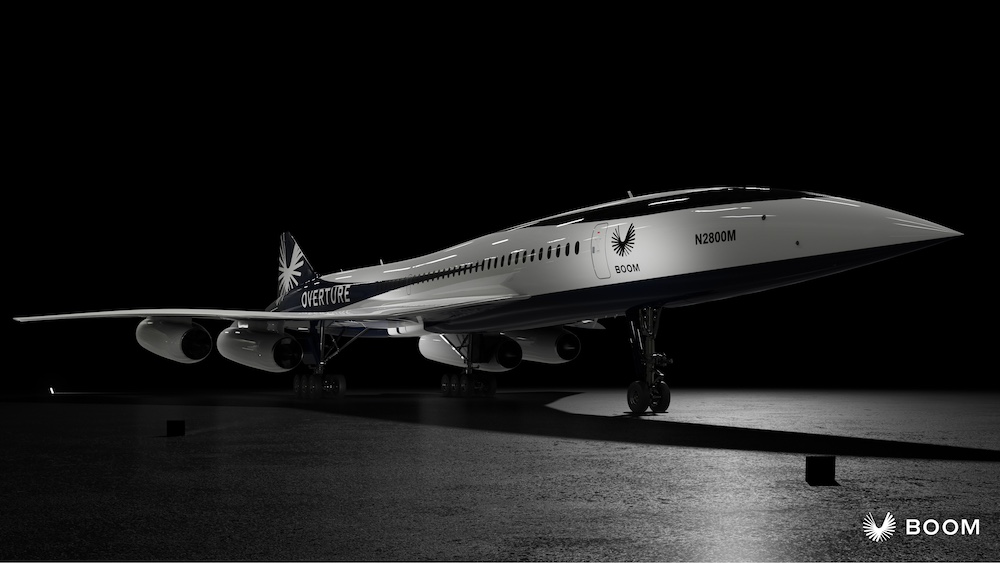
Mistakes of the past
When Concorde was being developed in the 1960s and early ‘70s, fuel efficiency wasn’t a top priority for engineers — oil prices were low, stable, and had been for decades. People were also only just starting to seriously consider the impact of greenhouse gas emissions on the climate.
What they were concerned with was building a supersonic passenger jet before the USSR. Concorde fit that bill, but it also required four times as much fuel as a standard jumbo jet to transport the same number of passengers the same distance.
By the time the airliner went into commercial service in 1976, the world had already been through one oil crisis that sent prices skyrocketing and another was just a few years away. The FAA has already imposed a ban on civilian supersonic flight over land, too, due to noise concerns about sonic booms, restricting the routes available.
The cost of Concorde itself was also far higher than expected. In 1973, several major airlines canceled their pre-orders for the airliner because the cost had exploded to $60 million, when it had been initially priced at less than $20 million (in 1972 dollars).
“You’ll be able to fly twice as fast as a Boeing or Airbus, and it’ll be like the cost of flying business today.”
Blake Scholl
Ultimately, only 14 Concorde jets ever went into commercial service, which limited the numbers of routes available on the planes. The governments of England and France gave those Concordes to British Airways and Air France free of charge, but even then, the airlines had to repeatedly increase ticket prices to compensate for the cost of fuel, rising maintenance costs, and passengers who were no longer so wowed by supersonic flight.
“Concorde was a $20,000 ticket, and there were 100 uncomfortable seats on the airplane,” Scholl told Freethink. “Guess what? That just doesn’t hunt, especially not with ‘90s kind of travel demand.”
Throw in a reduction in routes, a deadly Concorde crash in July 2000, and the general slump in air travel that followed 9/11, and you get the airliner’s retirement in 2003 — but Scholl thinks the time is ripe for a supersonic resurgence.
“The world’s more global than it’s ever been,” he told Freethink. “There’s way more international travel, and we’ve got all this new technology that lets us bring the price down. On Overture, you’ll be able to fly twice as fast as a Boeing or Airbus, and it’ll be like the cost of flying business today — think more like $5,000 than $20,000.”
Where to?
Overture won’t be able to fly that fast across the US, at least not initially. While Congress and NASA have pushed the FAA to revisit its ban on supersonic flight, the speed limit over land remains in place for now.
Even with that limitation, Boom says it has identified more than 600 profitable routes across the globe, where it estimates that airlines could make money with tickets priced similar to today’s first and business class fares. That 7-hour flight from NYC to London could be cut down to just 3 hours and 40 minutes, for example, while a trip from LA to Sydney could be slashed from 14.5 hours to just 8.5.
Boom’s supersonic airliner, which can carry up to 80 passengers, could somewhat speed up that NYC to LA trip, too — Overture could theoretically still fly about 20% faster than the average commercial airliner without breaking the speed of sound.
It’s also possible that it might one day be allowed to fly at supersonic speeds over the US. While the FAA’s rules about supersonic flight over land are currently based on speed — nothing faster than 760 mph is allowed — it is considering changing the rule to be based on noise instead.
“If the sound of a supersonic flight isn’t loud enough to bother anyone below, there’s no reason why the airplane can’t be flying supersonic,” said Peter Coen, integration manager for NASA’s Quiet Supersonic Transport (QueSST) mission, which is conducting research to help inform the FAA’s decision.
“It’s an evolved design, but it’s not made out of unobtainium.”
Blake Scholl
Boom says Overture will be a lot quieter than Concorde and the supersonic military aircraft that were flying at the time the FAA issued its ban, too. Scholl expects the regulations will change once people hear what the jet actually sounds like.
“Concorde had converted military engines, and then basically every other supersonic jet was a fighter, and those things are rip-roaring loud,” he told Freethink.
“Everything about Overture is designed for quiet,” Scholl continued. “The engines are modern turbofan — no afterburners, so much, much quieter — and the way we’ve designed the wing also enables us to need less engine thrust, and the thrust is quieter.”
“Not unobtanium”
Before we can know exactly how loud Overture will be, Boom needs to build one.
Though not easy, it’ll be a lot easier than the challenge faced by Concorde’s engineers. While they had to develop a bevy of brand-new technologies to get the plane airborne and breaking the sound barrier, Boom is mostly making use of existing tech — with some tweaks.
“We didn’t need to invent anything,” said Scholl. “What we’re doing is basically taking the same 20-year-old technology that was on the Boeing 787 and just changing the design of the airplane.”
“We took a 787, we shrank it down, we stretched it out, made it long and skinny, and then we put twice as many engines so it would go twice as fast,” he continued. “That’s it. It’s an evolved design, but it’s not made out of unobtainium.”
Because it’s using existing tech, Boom doesn’t have to worry about building new supply chains or navigating as many regulations, which can help speed up development. It also has an advantage when it comes to earning the public’s trust once it’s time for operators to start selling tickets.
“Passengers can rest assured that, while the airplane is new, this is not bleeding-edge stuff that’s never been proven before,” said Scholl. “This is actually 20-year-old tech.”
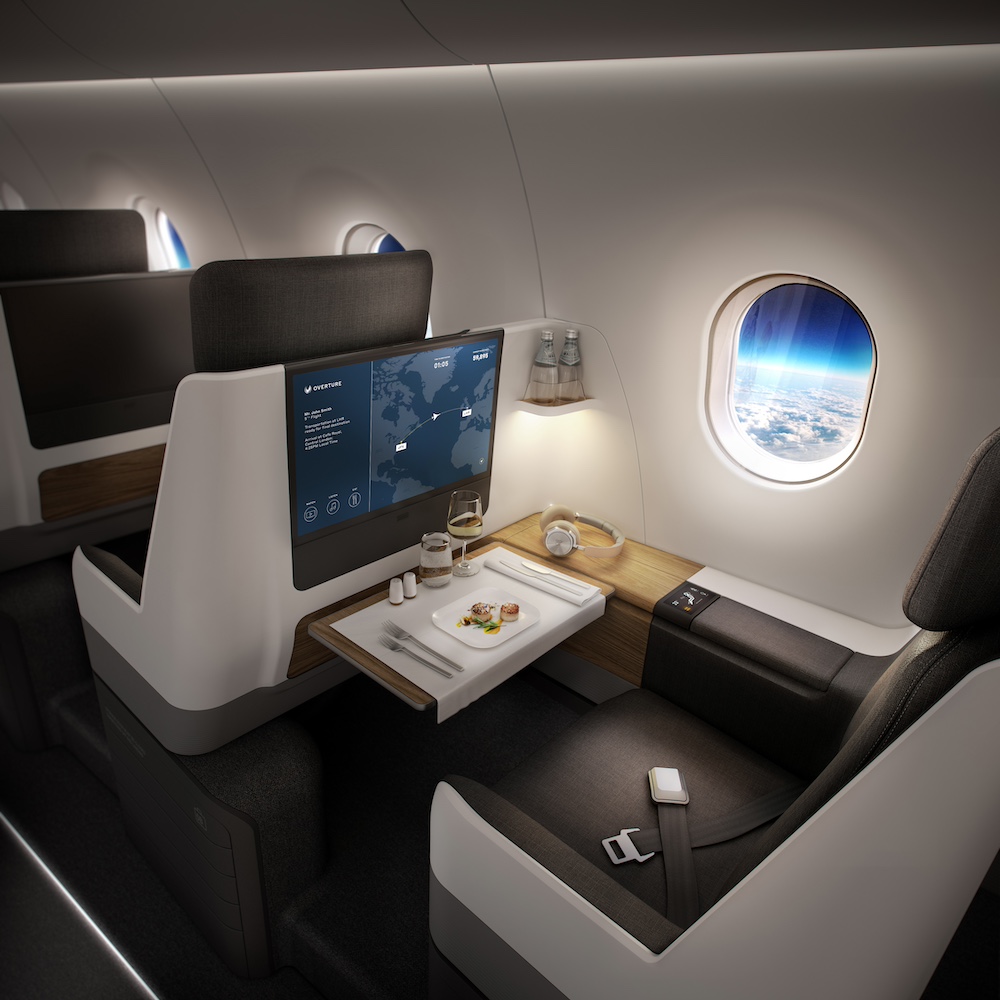
Boom is currently using XB-1, a supersonic demonstrator aircraft that is about the size of a large fighter jet, to test Overture technology, including an augmented reality vision system that uses cameras and sensors on the exterior of the plane to help guide pilots during takeoffs and landings is also onboard. (This eliminates the need for Concorde’s drooping nose design.)
Overture will also feature a specially designed flight deck that Scholl says is totally new, yet will feel “instantly familiar” to pilots. It’ll feature first-of-their-kind force-feedback sidesticks that let a pilot “feel” inputs from their copilot or autopilot.
“You can think of it as like going from a Blackberry to an iPhone,” he told Freethink. “If you look in a modern airliner flight deck, there are hundreds of knobs and switches and buttons and dials, even in the relatively new ones.”
“We’ve cleared away most of that,” he continued. “We’ve put in four large touchscreens, and then we have tactile controls and physical controls for just the things that are really flight critical.”
Boom flew the XB-1 for the first time in March 2024, and Scholl told Freethink that it conducted its eighth test flight on November 16: “We were at 82% of the speed of sound. That’s already faster than a 737, and with any luck, in about four weeks, we’ll be supersonic.”
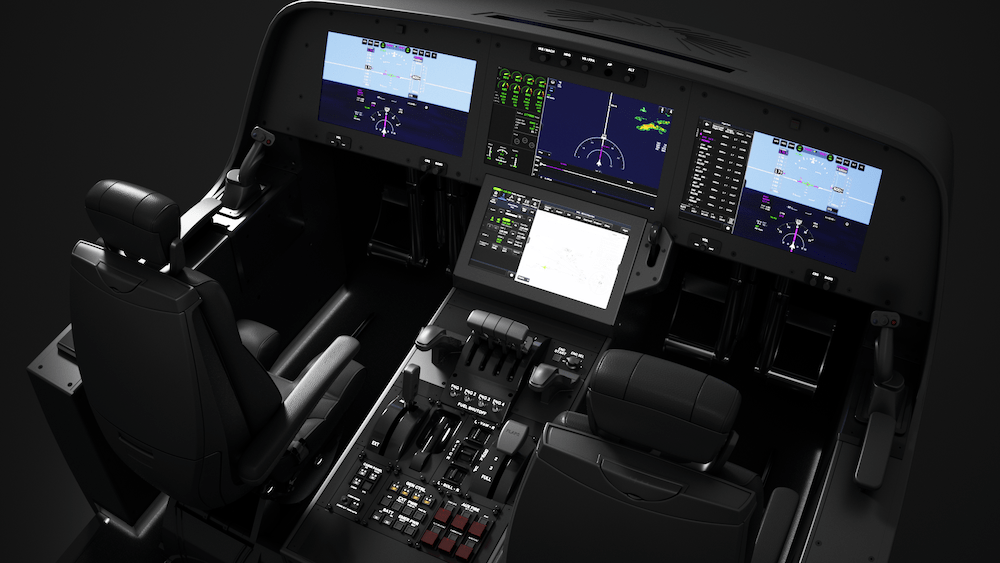
The XB-1 program is just one part of what Boom has going on right now.
In July, the startup announced that hardware rig testing was underway for Symphony, the engine it is developing for Overture, and that it expected to have a fully operational engine core ready in 2025.
To ensure the plane isn’t the drain on the environment that Concorde was, Boom has optimized this propulsion system to run on sustainable aviation fuel — low- or even no-carbon alternatives to standard jet fuel — though it can run on standard jet fuel.
“If the airplane lands somewhere where we don’t have sustainable fuel yet, it can retank on the old stuff,” said Scholl. “That makes it much easier for airlines to adopt compared with something like hydrogen, where if your hydrogen airplane lands where there isn’t any hydrogen yet, you’re in trouble because there’s no sort of backwards compatibility.”
Boom also completed construction on its North Carolina “superfactory” in July. The startup already has orders for more than 130 Overtures, with American Airlines, United Airlines, and Japan Airlines among its customers, and this will be the facility that builds those planes.
“I believe a world in which a lot more people go more places, more often, is a better world for us to live in.”
Blake Scholl
The big picture
Boom now expects to have Overture ready to carry passengers for its airline customers by 2029, and the first people to fly on the supersonic airliner are likely to be those currently shelling out for first class or business class tickets — $5,000 might be significantly less than what travelers were paying to ride on Concorde, but it’s still a lot for the average person used to flying economy.
Scholl told Freethink he expects flights aboard Overture will get cheaper over time, though, comparing it to how the first cell phones, cars, and computers cost more than the ones that followed.
“Our goal is to basically make supersonic flight available for the rest of us,” he told Freethink. “I believe a world in which a lot more people go more places, more often, is a better world for us to live in, a better world for our children to grow up in.”
“Imagine if our kids actually had friends from other continents,” he continued. “Today, it’s just not really practical, but if you speed up flights, and you’re able to do it at a price point that’s attainable, then there will be so much more travel creating all this human connection.”
UPDATE, 11/25/24 1:40 pm ET: This article was updated to clarify that Overture’s force-feedback sidesticks are not included in the XB-1, as it is a single-pilot aircraft.
We’d love to hear from you! If you have a comment about this article or if you have a tip for a future Freethink story, please email us at [email protected].
